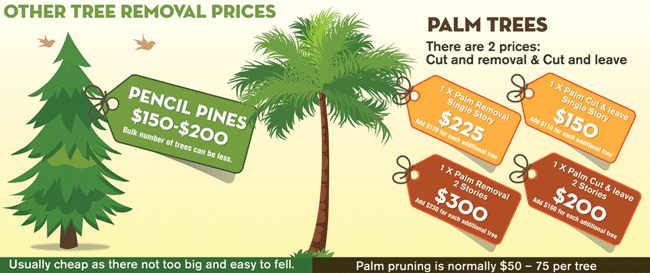Tree Preservation: Indicators That Indicate The Demand For Removal
Tree Preservation: Indicators That Indicate The Demand For Removal
Blog Article
Writer-Fields Bright
If you've ever before wondered about the destiny of the trees on your residential or commercial property, recognizing when it's time for removal is crucial. Yet exactly how do you determine if a tree can be saved or if removal is the only choice? By seeking specific indications and examining security threats, you can make informed decisions that profit both your landscape and your environments. Allow's discover the crucial aspects that enter play when choosing the fate of a tree and how you can guarantee the best outcome for your green friends.
Indicators of Tree Decrease
If you see any of the complying with indicators of tree decrease in your yard, it may be time to consider tree removal.
One typical indicator is dead or worn out branches, which can show underlying concerns influencing the tree's wellness. Keep an eye out for stained or wilted fallen leaves that linger even with correct treatment, as this could be a sign of condition or pests.
Another warning signal is extreme leaning or a noticeable shift in the tree's base, which may recommend root issues or architectural instability. Keep an eye out for fungal growth on the trunk or roots, as this can show rot and endanger the tree's security.
Additionally, if you observe large fractures in the trunk or significant arm or legs, it's critical to address these issues promptly to avoid possible hazards. Dealing with these indications of tree decrease quickly can assist maintain the safety and appearances of your backyard setting.
Security Issues
To make certain the well-being of your property and those around you, prioritizing security worries connected to trees is vital. Trees can pose various safety dangers if not correctly maintained. Dead or decaying branches may drop all of a sudden, threatening individuals or destructive frameworks.
Leaning trees can likewise be harmful, specifically if they're leaning towards a structure or power lines. Furthermore, https://chicago.cbslocal.com/2019/07/14/west-lawn-homeowner-in-need-of-tree-trimming-months-after-asking-city-for-help/ with substantial origin systems near structures or underground utilities can create substantial damage gradually.
https://www.google.com/search?q=Precision+Timber+Felling&ludocid=14488364426700125656&lpsid=CIHM0ogKEICAgID70bvttwE&source=sh/x/localposts/m1/1&lsig=AB86z5XDzNisBWY-O2yj3bksCBA3&shndl=-1&kgs=857edde0ca74e2e9 to consistently inspect your trees for any kind of indications of potential threat. Keep an eye out for cracks in the trunk, large dental caries, or signs of illness and decay. If you notice any one of these concerns, it's ideal to consult with a specialist arborist to analyze the circumstance and identify the essential strategy.
Taking proactive actions to attend to safety and security issues promptly can protect against mishaps and property damages in the future. Keep in mind, the security of your home and those around you must always be the leading priority when it involves tree maintenance.
Consulting an Arborist
When thinking about the health and wellness of your trees, getting in touch with an arborist is a crucial step. Arborists are educated experts that concentrate on the care and maintenance of trees. They can evaluate the total health of your trees, determine any type of concerns such as illness or structural problems, and give skilled referrals on the very best course of action.
By seeking advice from an arborist, you can obtain valuable understandings into the condition of your trees and figure out whether removal is essential. Arborists have the knowledge and experience to review the dangers related to keeping a tree versus removing it. They can additionally use assistance on alternative services, such as pruning, cabling, or supporting, to assist maintain the tree whenever possible.
In addition, arborists can aid you navigate any kind of neighborhood laws or allows that may be required for tree removal. Their competence can guarantee that the process is carried out safely and in conformity with any kind of suitable regulations.
Final thought
Finally, when determining whether trees can be conserved or if removal is needed, it is essential to take into consideration signs of decline and safety problems. Consulting an arborist for a detailed assessment is vital in making the best choice for the tree's health and potential threats. Remember, proactive treatment and prompt activity can aid protect trees and stop accidents.
